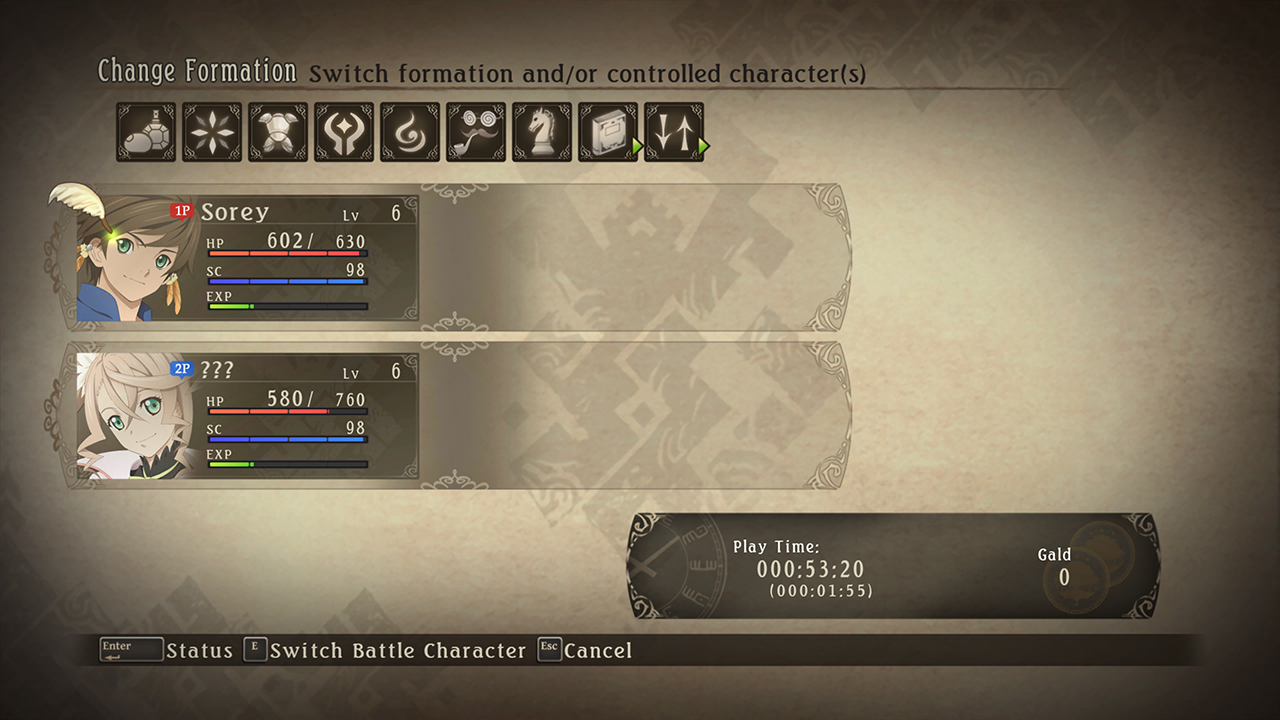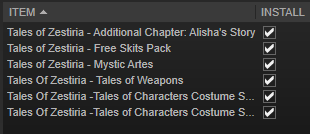Tales of Zestiria port analysis: Durante's verdict
Input and controls
Given that the most recent port I investigated previously was Final Fantasy Type-0, I went into trying to play Zestiria with mouse and keyboard with some trepidation. However, my concerns proved unfounded and I’m happy to report that Zestiria’s mouse and keyboard control scheme was clearly designed by someone who had previously played PC games.
Movement (WASD) and camera control (mouse) work as you would expect from a third person game, and all the other keybindings make sense as well. Also, there are options to invert the mapping of inputs to camera movement both horizontally and vertically. I know that games which omit these are almost impossible to play for some people, so I thought it worth mentioning.
All the inputs for every player—as is tradition for Tales games, local co-op is supported—can be mapped individually to either mouse and keyboard or other input devices. Furthermore, individual bindings can be set independently for normal gameplay and for battles. The game also features well-designed images not only for gamepad inputs but also for all the keys on a keyboard, and the latter even appear to be localized.
I’d classify this as a good job all around already in terms of input for a PC port, but it doesn’t stop there. The menus have been adapted to work very well indeed with keyboard and mouse, a rare treat really when it comes to these ports. All in all, the way input was handled in Zestiria’s PC version truly deserves praise.

Issues and tweaking possibilities
In the short time since the game’s release, a few issues have cropped up, but they appear to be easily circumvented, and hopefully easily patched. Note that I haven’t experienced any of these on my setup, but I’m reporting both them and their workarounds here for completeness.
- Audio-related issues ranging from noise to the game not launching at all. These appear to be related to the sound settings on a system, and can generally be eliminated by setting the hardware to 5.1 (or 6) channels and 48 kHz.
- Refresh rate mismatches if the game chooses e.g. a 59Hz resolution instead of a 60Hz one. This can be fixed with external tools (e.g. forcing the highest refresh rate in the driver) or worked around by using borderless windowed Fullscreen mode.
- Input mapping a new device without restart doesn’t always work reliably, to work around this issue just select the device, restart the game, and then perform the input mapping.
I expect all of these to be patched promptly; they don’t seem like issues which would be very hard to track down or fix.
One of the greatest strengths of PC as a platform are the myriad tweaking possibilities it offers beyond what was envisioned by the original game developers. In Tales of Zestiria’s case, I’ll present a few simple but very effective tweaks, outline some more advanced ones, and report on the likelihood of a FPS unlock after my initial experiments.
Keep up to date with the most important stories and the best deals, as picked by the PC Gamer team.
One of the simplest tweaks which might improve your experience with Zestiria is downsampling. As the game has very low requirements, even on a mid-range gaming PC it can be viable to run it at resolutions of 4k or even higher. Your options for downsampling include driver-level solutions such as Nvidia's DSR and AMD's VSR, as well as my own GeDoSaTo. With GeDoSaTo, I’ve also already enabled the possibility to toggle the game’s UI, as well as taking screenshots without the HuD showing. Do note, however, that the most recent version of GeDoSaTo is unstable for many users and it might pay off to wait a bit until this situation is resolved.

Talking about resolving issues, one disappointment for some fans prior to this release was that the original opening theme song for the game would be replaced with another, likely due to licensing issues. On PC, restoring the original was even easier than anticipated, as it shipped with the initial release version of the game. This error has since been corrected, but the file is already out there and easy enough to find and replace. If you are interested, just search for “AM_TOZ_OP_001_JPN.bk2” and replace the file “AM_TOZ_OP_001.bk2” in the “RAW/MOVIE” folder with it.
I spent around three hours looking into how the game performs its frame pacing and regulates animation speed. That’s not a lot of time when it comes to reverse engineering, but at this point I’d say the odds for a simplistic framerate unlock are rather bad. I did get the game to run at different framerates, both lower and higher than 30, with a lot of unstable and ill-advised hackery: changing the results of various Windows API functions which report and measure time, preventing the game threads from sleeping, and other heavy-handed adjustments which could just as well break a program entirely. Zestiria didn’t break during my short testing, but as expected everything I tried affected the number of frames delivered as well as the speed of animations and gameplay equally, with no sign of any possibility to independently adjust the two.
Thoughts and conclusion
I would classify Tales of Zestiria’s Steam release as a success. From all evidence we are privy to, it appears the porting team did the best they could under the circumstances, and the result is a strong port, with excellently adapted controls, great and consistent performance, arbitrary resolution support and a range of graphical options.
Despite that, or perhaps because everything else is up to such a standard, the FPS lock hurts. I think my only choice at this point is to repeat my appeal from a previous article: “Don't engineer your future games in a way which makes it apparently impossible for even what is clearly a technically competent porting team to change the framerate. This is the 21st century.”

Other than that, I am impressed by this release. Namco-Bandai also did a good job bundling some free DLC, the most important of which is still freely available to buyers until November. On the other hand, the availability of what amounts to a trainer for 20€ on Steam evokes something between amusement and disgust. However, apparently this type of DLC has been standard for the series for a while now, and, well, you don’t need to buy it.
Returning to the essentials, this port of Tales of Zestiria is about as good as you could ever expect it to be given the locked framerate, and the best version of the game available on any platform.

